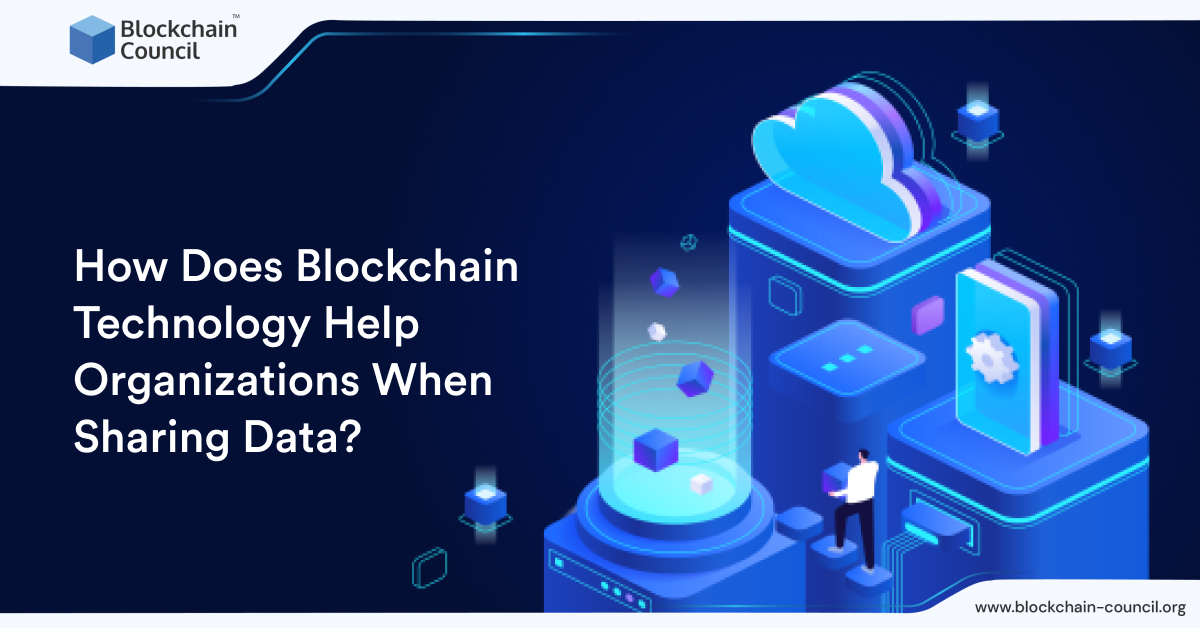
- Blockchain Council
- May 21, 2024
Summary:
- Data sharing is crucial for organizations in the modern world.
- Blockchain technology offers a potential solution to enhance data sharing.
- Blockchain utilizes cryptographic hashes and consensus mechanisms for data security.
- Cryptographic hash ensures data integrity and can be verified by anyone.
- Consensus mechanisms like PoS and PoW validate data transactions.
- Blockchain maintains data immutability by creating a chain of linked blocks.
- Data encryption in Blockchain uses public-key cryptography and digital signatures.
- Organizations benefit from enhanced data transparency with Blockchain.
- Blockchain uses data distribution to eliminate the need for intermediaries.
- Data traceability allows tracking the origin and evolution of data.
- Digital signatures and smart contracts foster data accountability and trust.
- Blockchain technology is employed by organizations for data sharing.
- IBM, UNICEF, and Walmart use Blockchain for secure and transparent data sharing.
- Blockchain enhances data efficiency through reduction, streamlining, and scalability.
- Data collaboration is facilitated by Blockchain's data sharing and interoperability.
- Blockchain encourages data innovation and experimentation.
- Data governance is supported by Blockchain's features like ownership, consent, and ethics.
- Challenges to Blockchain-based data sharing include technical, organizational, and regulatory issues.
- Future trends in Blockchain data sharing include hybrid Blockchains and AI integration.
- Blockchain technology enables secure, transparent, and efficient data sharing.
- Organizations can tap into the benefits of Blockchain to enhance their operations.
Introduction
In this rapidly growing and changing world, access to the latest data and sharing it within your organization or the outside world is one of the most important aspects of it. Data sharing is making data available and accessible to multiple parties, such as individuals, organizations, or systems, in a much more efficient and cost-effective manner. But, new distributions in technology are forcing Industries to change how they share data and look for individuals who can aid in that transition.
One possible solution is Blockchain technology. Blockchain is a system of storing and transferring data using a computer network linked by cryptography. In this blog, we will explore how Blockchain technology helps organizations when sharing data. We will discuss the benefits and challenges of using Blockchain for data security, transparency, efficiency, collaboration, and governance. We will also look at current and future trends in Blockchain technology and see what things a professional in the field needs to know before starting their journey. So, let us dive in and understand how Blockchain help organization when sharing data, and first, we talk about security.
Blockchain and data security
Ensuring data security is one of the most important aspects of data sharing. Data security refers to protecting data from unauthorized access, use, modification, or disclosure by implementing proper measures. Data security is essential for maintaining data confidentiality, integrity, and availability. Blockchain has several features that make it suitable for data sharing, such as:
Data integrity
Blockchain uses cryptographic hashes and consensus mechanisms to ensure accurate and consistent data.
Cryptographic Hash
A cryptographic hash is a unique identifier generated from the data content. It ensures that it is the same throughout the nodes and can be tracked with the help of the hash by anyone at any time they want. You don’t need special permissions to verify the hash. Anyone can verify a particular hash by looking for it on the Blockchain.
Consensus Mechanisms
A consensus mechanism is a set of rules that determines how the network agrees on the validity of the data transactions. Different consensus mechanisms are being used depending on the type of Blockchain and its need. PoS and PoW are two of the most famous consensus mechanisms utilized by major Blockchains like Ethereum and Bitcoin.
These features come together to ensure the integrity of the data and ingrain trust in the clients and other consumers of the platform.
Data immutability
Blockchain prevents data from being altered or deleted by creating a permanent and verifiable record of all data transactions. A hash adds Each transaction to a block linked to the previous block.
This creates a chain of blocks that forms the ledger. The ledger is distributed among all the network participants, making it impossible to change or erase any transaction without breaking the chain and losing the consensus.
Data Encryption
Blockchain protects data from unauthorized access using public-key cryptography and digital signatures.
Public-Key cryptography
Public-key cryptography is a system that uses two keys: a public key shared with everyone and a private key kept secret by the owner. This ensures that only the valid owner has access to the information, and they can access it whenever they want.
Digital Signature
Another way that is utilized by some platforms is digital signatures. These are codes generated by applying the private key to the data content. These features ensure that only authorized parties can read or write the data.
Blockchain has been a milestone in how we secure our data. There have been a lot of skirmishes about the standard system where data security is often not accountable and leads to the leak of sensitive information. By employing Blockchain, we can ensure that the data being shared is secure from leaks and any 3rd party attempts to make changes to it.
Certified Prompt Engineer™
Blockchain Technology Can Enhance Data Transparency
Maintaining transparency while we share data is one of the biggest cons of the standard ways of sharing data. While some data-sharing methods may be secure, there is no way to ensure transparency. Blockchain is structured in a manner where it can ensure transparency while being equally safe at the same time. This system works flawlessly by using components like:
Data distribution
Blockchain eliminates the need for a central authority or intermediary by creating a peer-to-peer network that distributes data among all participants. Each participant has a copy of the ledger that contains all the data transactions. This ensures everyone can access the same data and verify its authenticity and validity.
Data traceability
Blockchain creates a distributed ledger that records all data transactions. Each transaction is timestamped and linked to the previous transaction by a hash. This creates a chain of transactions that forms the history of the data. This ensures that anyone can trace the origin and evolution of the data and identify its source and destination.
Data accountability
Blockchain uses digital signatures and smart contracts to foster data accountability and trust.
Digital signature
We have already discussed Digital signatures in data security. Here we will see how they help in ensuring data transparency too. They do this by confirming the identity of the owner and the sender of the information. Ensuring that no one else had access to the information that had been shared.
Smart contract
Smart contracts are self-executing agreements that are encoded in the Blockchain. They define the rules and conditions for data sharing and enforce them automatically. Changes cannot be made once any smart contract is deployed, making them extremely reliable and transparent.
Each of these components tries to ensure transparency at different levels of sharing information, whether it be any information the platform wants to share with its consumers or the consumers using the platform to share with others.
Organizations that Use Blockchain for Data Sharing
Some organizations are already using Blockchain technology in their Opera to share information and maintain its security and transparency. Our goal is to discuss how it has worked out for them and whether the others will adopt the same measures in the upcoming months and years.
IBM
IBM is one of the biggest Supply-Chain companies in the world and has always been ahead in integrating cutting-edge technologies into its operations. IBM uses Blockchain to create a secure and transparent platform for sharing data among its supply chain partners. So, it has been more functional and highly productive than standard practices.
UNICEF
UNICEF uses Blockchain to track and verify the delivery of humanitarian aid and donations. Being involved in humanitarian work can lay suspicions if there is no transparency in their operations, and by using Blockchain, UNICEF is trying to ensure that its operations are as transparent as possible.
Walmart
Walmart is one of the biggest consumer brands in the market. These brands often need more regulations and tracking of the goods while ensuring the supply chain works flawlessly. Thus Blockchain is employed to trace the origin and quality of its food products. It ensures that no one in the line of operations is involved in malicious activities and that goods are shipped and delivered at the given time.
These companies are perfect examples of how Blockchain is making striking changes in how the exchange of information takes place in businesses and enterprises. It’s not limited to one sector, and most of the major corporations are slowly integrating Blockchain to share information.
Ensuring Data Efficiency Using Blockchain
Data efficiency is another crucial aspect of data sharing. Data efficiency refers to optimizing data storage, processing, and transfer. An efficient data-sharing mode ensures reduced data costs, complexity, and latency. Blockchain technology enhances data efficiency by:
Data reduction
Blockchain reduces data duplication and storage costs by creating a single source of truth for all data transactions. Instead of storing multiple copies of the same data in different locations, the Blockchain holds only one copy shared among all participants in the ledger. This reduces the amount of data that needs to be stored and synchronized.
Data streamlining
The secret of any system that is efficient and fast is being streamlined. Streamlining a system means cutting out structural issues that bloat the system and make it slow and inefficient. Blockchain ensures this by introducing consensus mechanisms and smart contracts for verification and transparency purposes that eradicate the need for any manual intervention. The manual intervention takes a lot of time, while the chances of negligence are comparatively much higher.
Data scalability
Data scalability is a big headache for standard systems, but not for Blockchain, where speed and scalability are ensured by using distributed networks and parallel processing. Distributed Networks consist of multiple nodes that communicate with each other, while parallel processing is a method that divides a task into smaller subtasks that are executed simultaneously by different nodes. These features increase the network’s capacity and performance and enable higher data scalability.
Certified Artificial Intelligence (AI) Expert™
Ensuring Data Collaboration
Data collaboration refers to the cooperation and coordination of data among different parties, such as individuals, organizations, or systems. Data collaboration Is necessary for big organizations and ensures that important information is shared and collaborated for innovation and learning. Blockchains aid in it by:
Data Sharing
Blockchain enables sharing across different organizations and networks by creating a common platform that connects them by allowing data to be exchanged and transferred among various parties without compromising security or transparency.
Blockchain also allows data to be shared in real-time or near-real-time, enabling faster and more accurate decision-making.
Data interoperability
The data shared on Blockchain is not limited to a particular platform or decryption method, which means that once you access the data, you can easily read it without needing any specific tool to decrypt it.
Blockchain also allows data to be converted and translated among other languages and units depending on the data type you want to share. These features ensure data can be easily integrated and analyzed across domains and contexts.
Data innovation
Blockchain enables data experimentation and exploration by enabling data innovation and creativity. Blockchain allows data to be combined and transformed in new ways, creating new insights and value. Blockchain also allows data to be crowdsourced and co-created, leveraging the collective intelligence and wisdom of the network.
By using Blockchain technology, organizations can share data collaboratively, enabling its sharing, interoperability, and innovation.
Blockchain and data governance
Data sharing is not limited to just sharing data. It also refers to managing and overseeing data according to quality, value, and risk. Data governance is essential for ensuring data compliance, consent, and ethics. Blockchains can be helpful while ensuring data governance by:
Data Ownership
Unlike any standard system of sharing data where data is subject to the platform, you are using. Blockchain ensures that the access to access, modify, share, or delete a set of data remains exclusive to its owner. This is particularly interesting as most platforms that are not Blockchain-based take partial ownership of data in the pretense that it isn’t misused. Blockchain has no such system, and your data always remains yours completely.
Data consent
Data shared on the Blockchains are saved so that only the people with proper access methods and information can view it. There is no alternative way to get your hands on it. Smart contracts, tokens, and private keys are a few methods that ensure this system works smoothly. Companies can use this to share sensitive data that can only be assessed by employees on their workstations and prevent any sort of mishandling or leak of data.
Data ethics
Blockchain addresses data privacy and ethical issues using zero-knowledge proofs and differential privacy. Zero-knowledge proofs are cryptographic techniques that allow one party to prove something to another without revealing information other than the proof itself. At the same time, Differential privacy is a statistical technique that adds noise to the data to protect the individual’s identity or sensitive information.
Blockchain ensures that while you share data, it is not only shared in the best possible way but also that data is appropriately managed. No mishandling is possible, making it extremely attractive for companies. But employing these techniques is why if you are a professional, knowledge of these concepts can give you an edge over your co-workers if you are a professional.
Certified Artificial Intelligence (AI) Developer™
Some Challenges to Data Sharing Using Blockchain
Despite the benefits of using Blockchain for data sharing, some challenges must be addressed. Some of the challenges are:
Technical challenges
While Blockchain is much superior in technology when compared to the other systems that are in use. It still has significant problems like integrating different Blockchains, the high cost of sharing data, and the emergence of new threats to Blockchain security. While these problems are minuscule compared to any standard system, they can still raise a lot of questions for companies looking to transition. However, it can be tackled by hiring Blockchain security professionals who know the best measures to secure a chain.
Organizational challenges
Blockchain faces organizational challenges, such as governance, culture, and education. Management refers to establishing and enforcing rules and policies for the network users and ingraining a very different culture in the Blockchain platforms. Education among the experienced folks is also an issue as most of the current workforce will be unable to work with the new technology making them unfit to work. Thus, hiring new and passionate individuals can be challenging while everyone tries to transition simultaneously.
Regulatory challenges
Blockchain is still viewed from the lens of suspicion by the regulatory authorities because of the same reasons it is being considered by major corporations worldwide. While its key features ensure security and transparency to the consumers, it poses a challenge to the authorities, that see it as a pathway where criminal activities can occur without any oversight. Different countries are planning to bring various regulations that can limit the benefits that Blockchain brings to the table.
Apart from regulatory challenges, all of them can be easily solved by hiring talented individuals skilled in the sector and with the required knowledge to build businesses with the type of information pipeline they need. But what about the future? Is Blockchain ready for the future and the challenges it will bring?
Future Trends in Blockchain-based Data Sharing
You can be assured that Blockchain is here to stay. Blockchain technology constantly evolves and improves, creating new opportunities and possibilities for data sharing. Some of the trends are:
Hybrid Blockchain
A hybrid Blockchain is a type of Blockchain that combines the features of public and private Blockchains. Public Blockchains are open and accessible to anyone, while private ones are closed and restricted to specific parties. Hybrid Blockchains allow data to be shared selectively and securely among different groups of participants, depending on their roles and permissions.
Decentralized Applications
Decentralized applications are already popular among the masses. Decentralized applications enable data sharing among users and devices, creating new services and functionalities. Decentralized applications can also leverage smart contracts and tokens to automate data transactions and incentivize data sharing.
Blockchain analytics
Blockchain analytics collects, analyses, and visualizes data from a Blockchain network. Blockchain analytics can help organizations monitor and optimize their data-sharing activities, such as tracking data flows, measuring data quality, identifying data patterns, detecting anomalies, and generating insights.
AI in Blockchain
The advent of AI in Blockchain will be game-changing. It will completely change how consensus networks work and secure the vulnerabilities that plague smart contracts. While AI integration in the Blockchain is still in the early stages, it has started to show the influence it can have in the upcoming few months.
Conclusion
Blockchain technology can provide a secure, transparent, and efficient data-sharing platform, enabling innovation, learning, and problem-solving. These features are very lucrative for the companies as they will allow them to increase productivity in their operations and help them tap into the new generation of consumers who care about their data security while using a platform and embracing transparency.
In this blog, we have explored how Blockchain technology helps organizations when sharing data. We have discussed the benefits and challenges of using Blockchain for data security, transparency, efficiency, collaboration, and governance. We have also looked at some current and future trends in Blockchain technology and its applications for data sharing. This blog can act as a roadmap for any individual looking to start their journey in the domain but doesn’t know the areas they should focus on. The certifications by the Blockchain Council are designed similarly to provide the best resources to help you learn everything in one place; you should check them out and start your learning journey with them.
- Data integrity using cryptographic hashes and consensus mechanisms.
- Cryptographic hashes for unique verification.
- Consensus mechanisms (e.g., PoS, PoW) validating transactions.
- Data immutability via linked blocks to prevent alteration.
- Data encryption with public-key cryptography and digital signatures.
- Enabling data distribution in a peer-to-peer network.
- Achieving data traceability through timestamped, linked transactions.
- Establishing data accountability via digital signatures and smart contracts.
- Ensuring transparency with mechanisms like data distribution, traceability, and accountability.
- IBM utilizes secure Blockchain for efficient supply chain data sharing.
- UNICEF tracks humanitarian aid and donations transparently.
- Walmart ensures food product origin and quality through traceability.
- Blockchain’s benefits include improved security, transparency, and efficiency.
- Blockchain enhances data efficiency by:
- Reducing data duplication and storage costs.
- Streamlining processes through consensus mechanisms and smart contracts.
- Ensuring data scalability with distributed networks and parallel processing.
- Facilitating data sharing across organizations via a common platform.
- Allowing data interoperability across domains and contexts.
- Encouraging data innovation and collaboration among parties.
- Ensuring data ownership, consent, and ethics through advanced techniques.

































































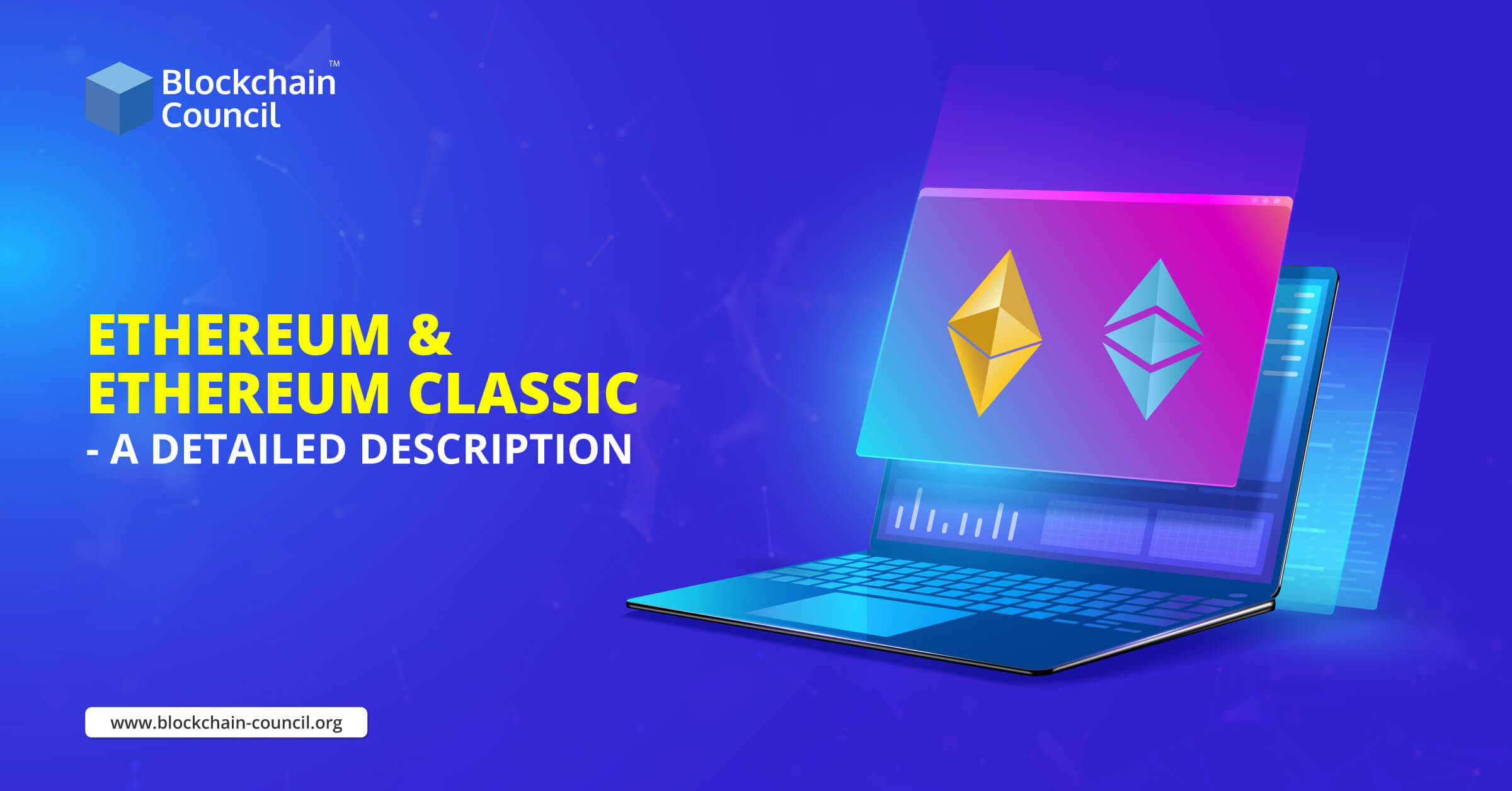
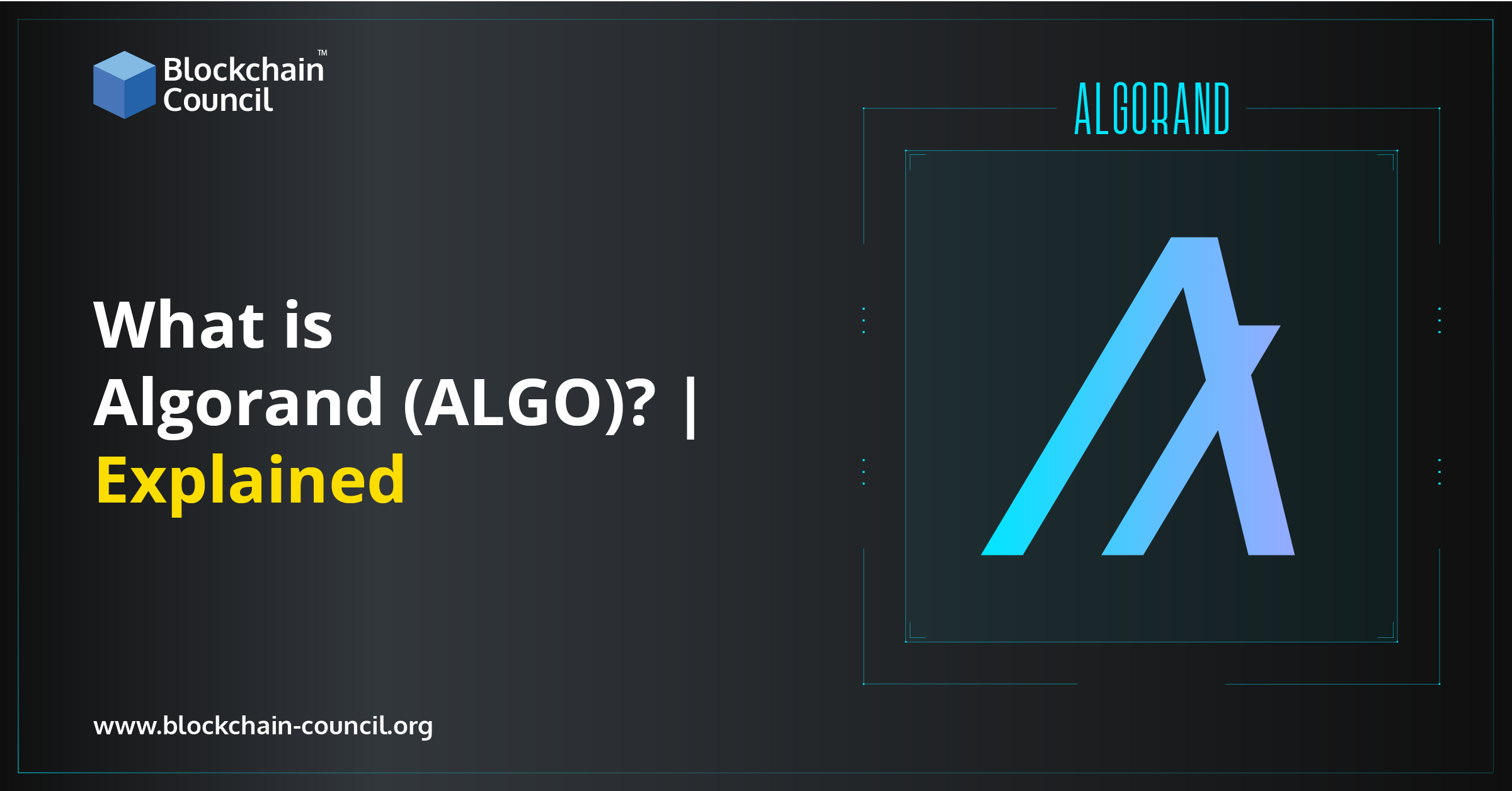
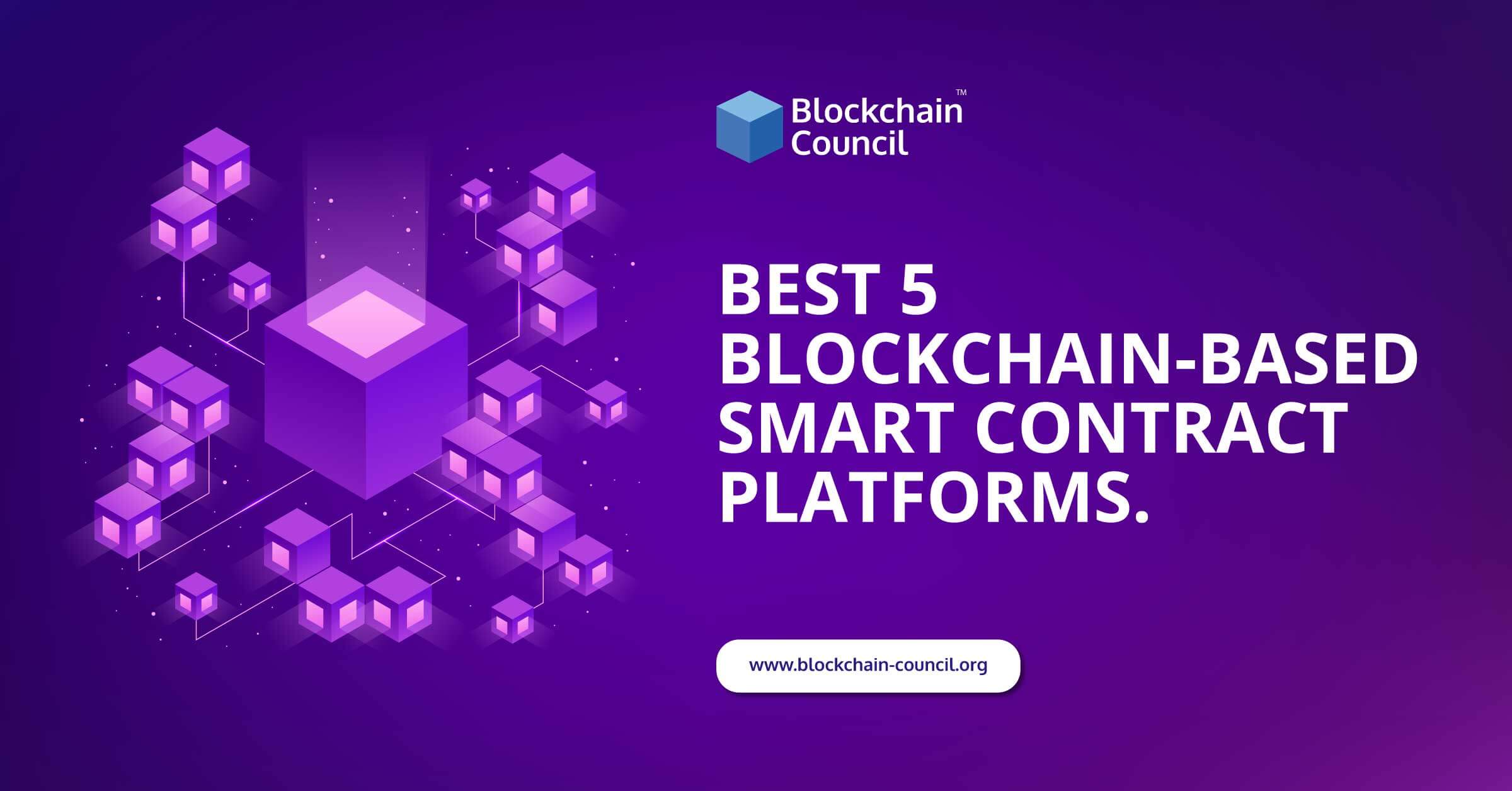
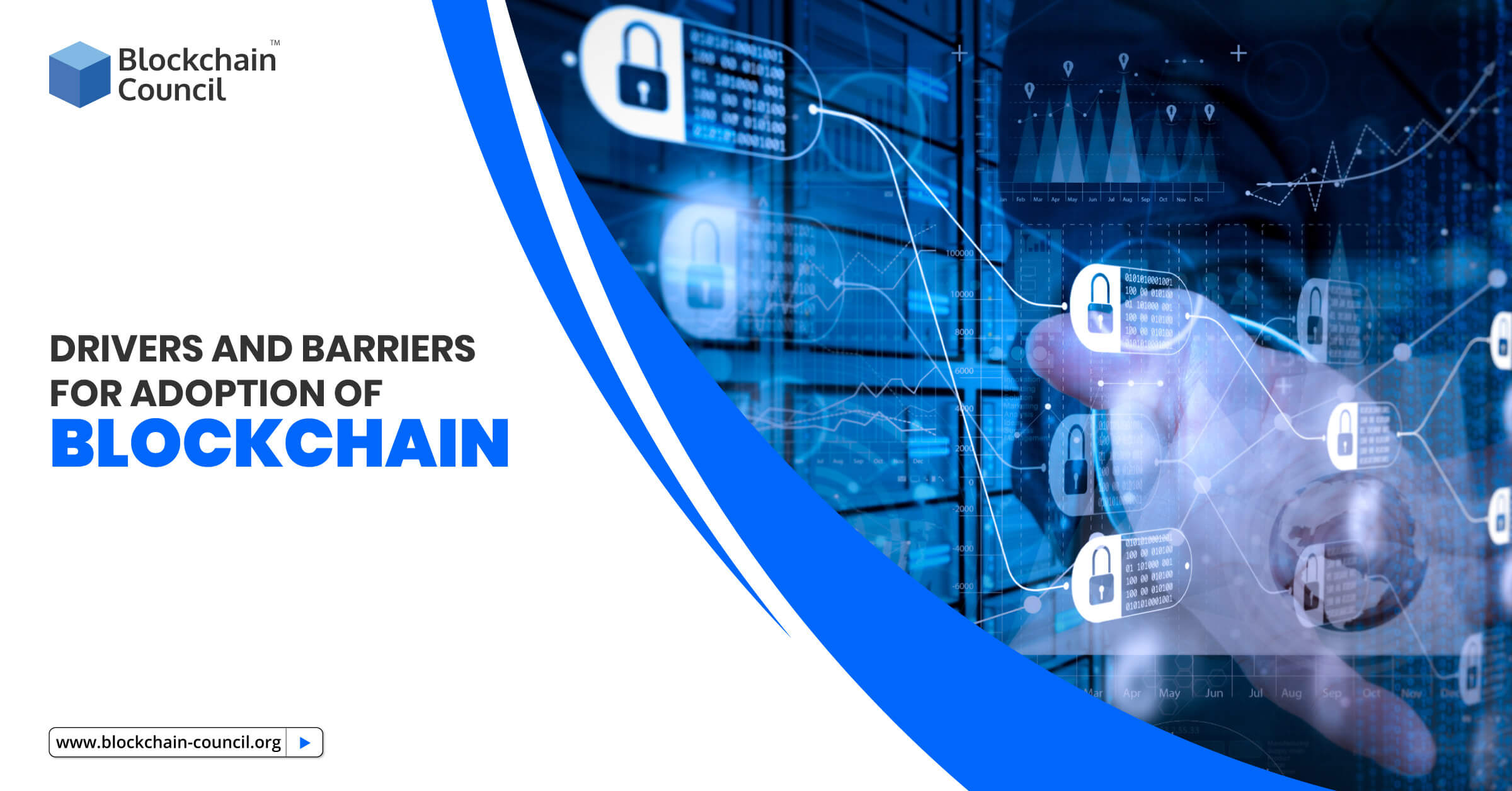
 Guides
Guides News
News Blockchain
Blockchain Cryptocurrency
& Digital Assets
Cryptocurrency
& Digital Assets Web3
Web3 Metaverse & NFTs
Metaverse & NFTs
